
红榴石宝石:特性、含义及价格指南
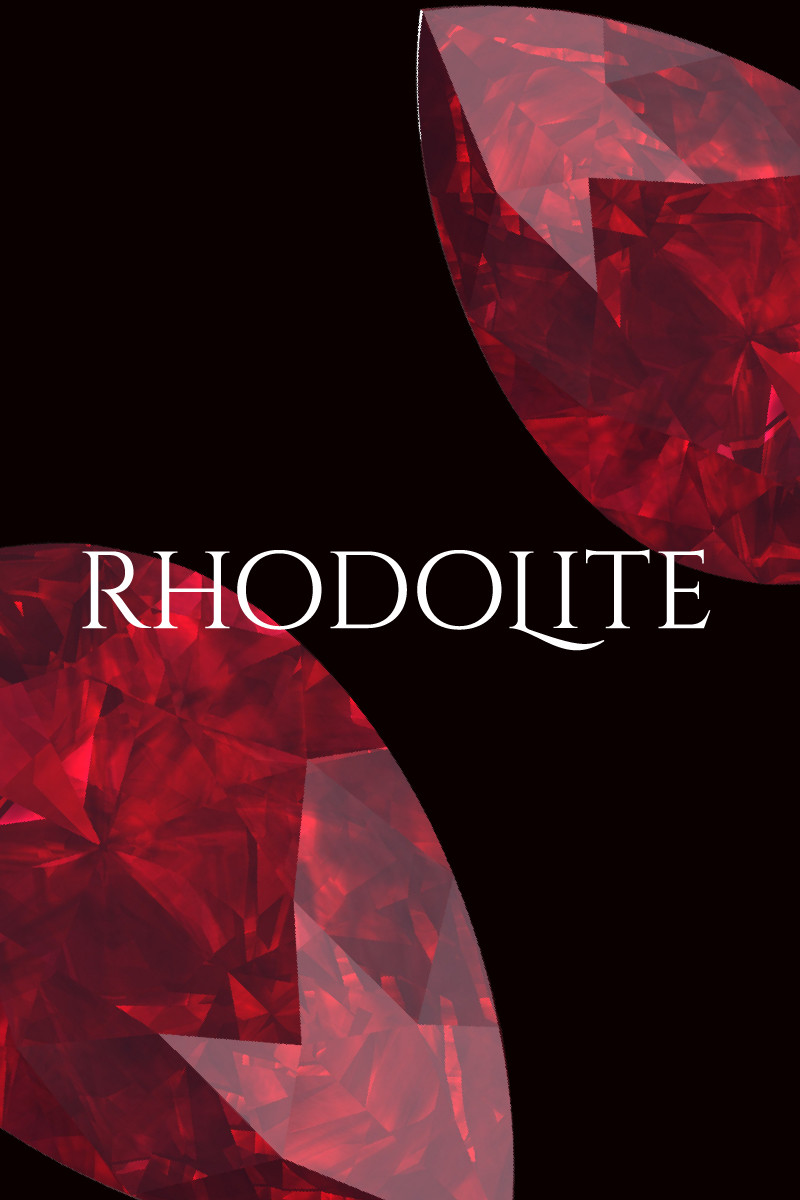 红榴石是一种粉红色到红紫色的石榴石宝石。红榴石是天然宝石吗?是的!红榴石的绚丽色彩,无论是覆盆子色、李子色还是酒红色,都是大自然的杰作。
红榴石是一种粉红色到红紫色的石榴石宝石。红榴石是天然宝石吗?是的!红榴石的绚丽色彩,无论是覆盆子色、李子色还是酒红色,都是大自然的杰作。
在石榴石中,玫瑰榴石以其更浅、更紫的颜色和更广泛的产地而著称。在众多宝石中,玫瑰榴石以其高折射率(意味着闪耀着奇幻的光芒)和丰富浪漫的色彩而脱颖而出。
但玫瑰榴石真的好吗?我们觉得它好,但读完本指南后,您自己就能做出判断了。
今天,我们将介绍玫瑰榴石的所有特性、治疗功效、历史、价格等。
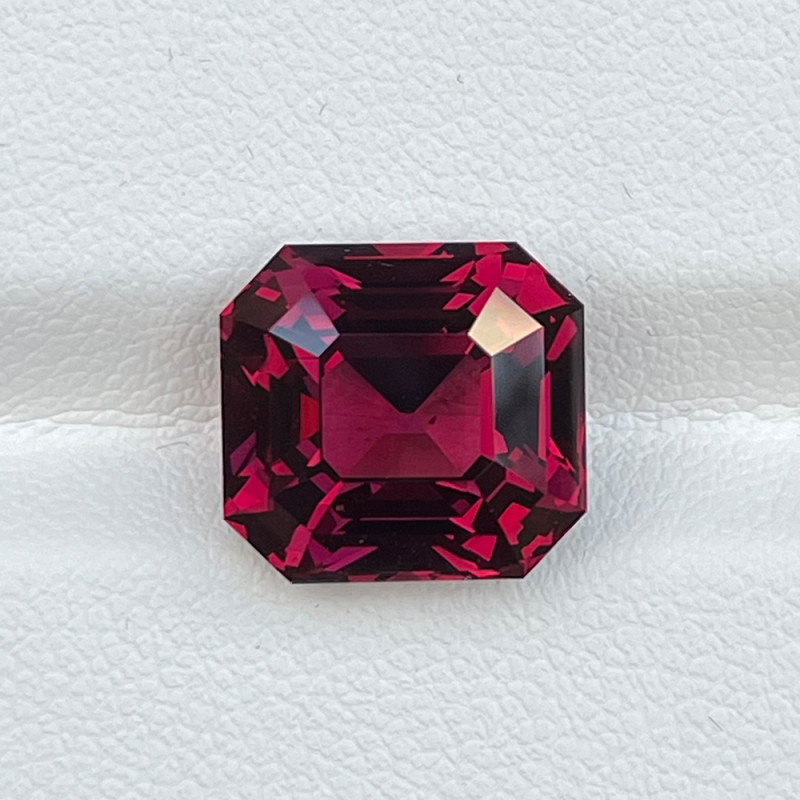
关于玫瑰榴石
玫瑰榴石是一种半宝石,尽管它常常与珍贵的红宝石相似。事实上,玫瑰榴石的一些昵称包括:
亚利桑那红宝石
蒙大拿红宝石
新墨西哥红宝石
当然,玫瑰榴石和红宝石是不同的宝石。
红榴石与红宝石的主要区别在于它们的成分、硬度、价格和稀有性。红宝石是一种刚玉宝石, 莫氏硬度为9,高于红榴石。红宝石也比红榴石更稀有,价格也更昂贵。
由于价格较低,玫瑰榴石可以作为红宝石的替代品,成为传统的七月诞生石。玫瑰榴石本身也是一月诞生石、摩羯座或水瓶座、 黄道十二宫石以及二周年结婚纪念石,就像所有石榴石一样。
关于常见的混淆,玫瑰辉石经常与蔷薇辉石混淆。蔷薇辉石是一种不透明的玫瑰红色锰硅酸盐宝石,通常带有黑色至棕色的脉络或斑点。
 上图:多面红榴石耳环
上图:多面红榴石耳环
玫瑰榴石规格和特性
石榴石矿物群有着复杂的谱系。主要系列包括镁铝榴石(包括镁铝榴石、铁铝榴石和锰铝榴石)和钙铁榴石(包括钙铬榴石、钙铝榴石和钙铁榴石) 。每个种类都有自己的变种,尽管许多变种是杂交品种。
玫瑰榴石是镁铝榴石和铁铝榴石的混合物,因此得名“铁铝榴石”。这种宝石的化学式是 (Fe,Mg)3Al2Si3O12。
传统上,人们认为玫瑰榴石的成分是1份铁铝榴石和2份镁铝榴石。现代宝石学资料则认为其成分比例为3份铁铝榴石和7份镁铝榴石。
尽管如此,锰铝榴石和钙铝榴石等其他种类的痕迹在玫瑰榴石中很常见,并且不同玫瑰榴石之间的镁铝榴石-铁铝榴石比例可能有所不同。
您可能能够使用磁铁将玫瑰榴石与外观相似的宝石区分开来,因为玫瑰榴石具有强至极强的磁性。
以下是其余的玫瑰榴石属性:
莫氏硬度:7-7.5
颜色:粉色、红色和紫色之间的浅到深色色调,包括淡紫色、覆盆子色、红色、紫罗兰色、紫红色、红紫色、紫罗兰色、红色
晶体结构:立方/等轴
光泽:玻璃质(玻璃状)
透明度:半透明至透明
折射率:1.745-1.795(某些范围因来源而异;坦桑尼亚 = 1.745-1.760;美国北卡罗来纳州 = 1.760-1.761;津巴布韦 = 1.750-1.760)
密度:3.74-3.94(某些范围因来源而异;坦桑尼亚 = 3.79-3.80;美国北卡罗来纳州 = 3.84-3.89;津巴布韦 = 3.83-3.89)
解理:无;有时分界不明显
断口:贝壳状
条痕:白色
发光:无
多色性:无
光学效应: 罕见星光;罕见变色
分散度:0.026
虽然玫瑰榴石本身是一种宝石,但它也有一些亚型。
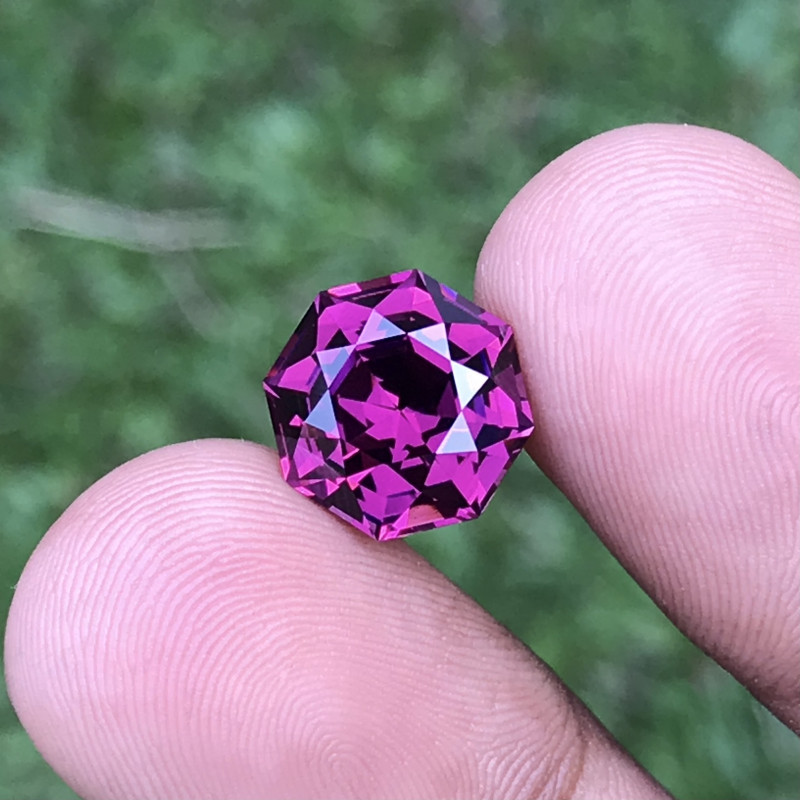 上图:葡萄石榴石
上图:葡萄石榴石
玫瑰榴石的种类
第一种玫瑰榴石亚型是葡萄石榴石,由于含有微量铁和镁,所以呈现深紫色。
接下来,我们有Umbalite 石榴石。
产自坦桑尼亚翁巴河谷的红榴石是一种粉红色、紫粉红色或紫红色的红榴石,颜色比大多数红榴石更鲜艳。有人称这种高品质亚型为“红榴石之王”。
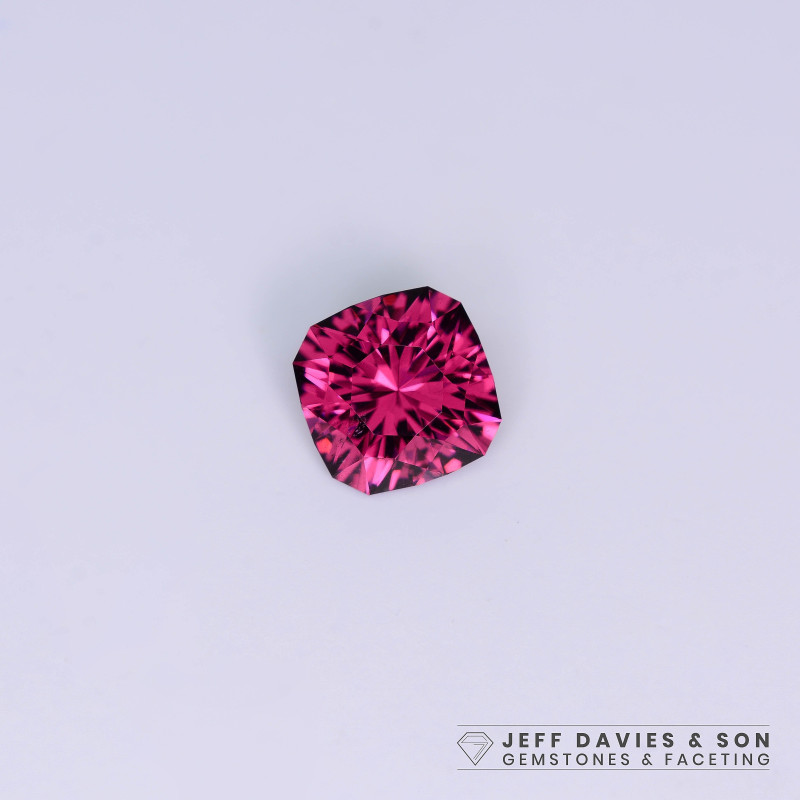 上图:紫云英石榴石
上图:紫云英石榴石
让我们进入光学效应子类型,从变色玫瑰榴石开始。
许多石榴石都会变色,包括玫瑰榴石。变色玫瑰榴石在日光下呈现蓝色,在白炽灯下呈现紫红色。
最后,我们有星光玫瑰榴石。
此亚型呈现出星光现象,这是一种光学效应,在红榴石表面可见多条光线反射,形成星形。星光可能有4条或6条光线,有些标本从不同角度会同时呈现4条和6条光线反射。不过,星光现象在红榴石中并不常见。
 上图:玫瑰榴石雕刻成的中国龙
上图:玫瑰榴石雕刻成的中国龙
玫瑰榴石的意义和历史
红榴石象征着爱、同情和慷慨。这颗石榴石作为二周年纪念宝石,象征着情侣之间永恒不灭的爱情之火。
您可能知道,石榴石是最早被发现的宝石之一,其历史可以追溯到几个世纪以前。悠久的历史赋予了人们对红榴石精神含义的诸多解读。
从历史上看,石榴石象征着光明(无论是精神层面还是字面意义上)、生命和守护。如今,玫瑰榴石也拥有类似的含义,象征着友谊、承诺和激情。
历史
玫瑰榴石是一种更现代的发现。美国矿物学家威廉·厄尔·希登(William Earl Hidden)首次听说美国北卡罗来纳州发现了一种新的石榴石,是在1893年和1897年当地矿物学家AM Field的报告中得知的。
菲尔德认为这些宝石属于铁铝榴石。希登和他的同事JH·普拉特博士对这些宝石进行了分析,并于1898年发表了他们的研究成果,提出了“玫瑰榴石”这一名称,并确认其成分实际上是镁铝榴石和铁铝榴石的混合物。
玫瑰榴石的名字可能来自希腊语rhodon ,意为“玫瑰”或“玫瑰色”。一些人认为,这个名字来源于杜鹃花,因为它的颜色与玫瑰榴石相似。
值得注意的是,“玫瑰榴石”并非正式的矿物学名称,而是一个流行的商品名,用于营销镁铝榴石-铁铝榴石。
玫瑰榴石品种发现
1978年,坦桑尼亚矿工在翁巴河流域首次发现了乌姆巴石榴石。
1988 年在坦桑尼亚莫罗戈罗地区发现的变色石榴石多年来一直被认为是镁铝榴石,但后来的分析证明它们实际上是镁铝榴石和锰铝榴石的混合物。
从历史转到治疗,玫瑰榴石有什么用处?
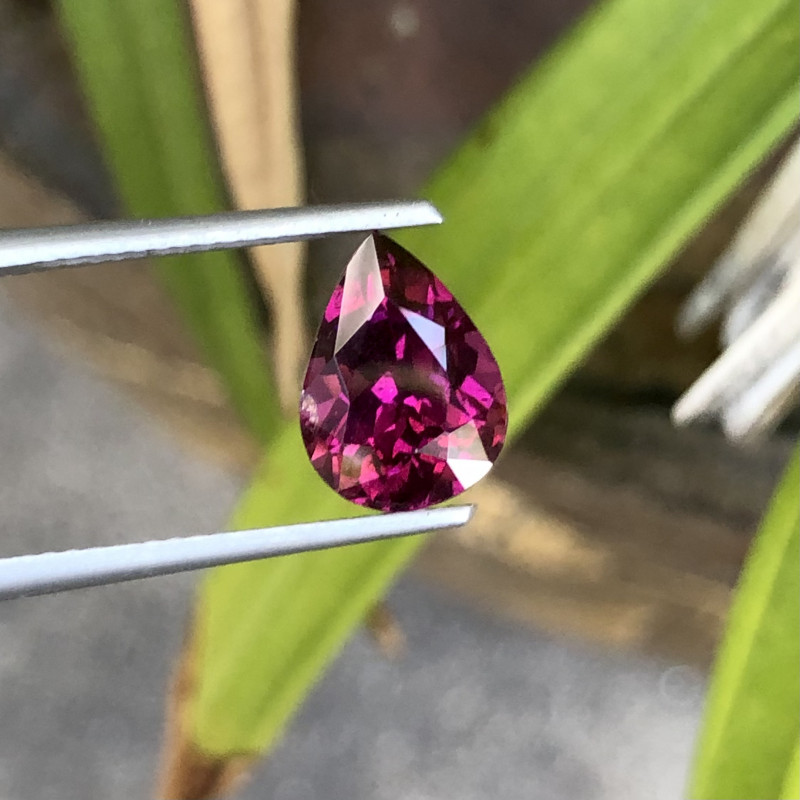 上图:梨形刻面玫瑰榴石
上图:梨形刻面玫瑰榴石
红榴石的治疗功效
像所有晶体一样,玫瑰榴石可以作为治疗石。
红玫瑰榴石与其他红色宝石一样,能提升力量、激情和勇气。紫色玫瑰榴石(例如葡萄石榴石)与其他紫色宝石一样,能提升精神智慧和自我意识。同时, 粉色宝石(例如覆盆子玫瑰榴石)则鼓励人们无条件地爱自己和他人。
身体康复
水晶治疗师推荐使用玫瑰石来治疗:
心脏问题
肺部问题
出血
髋关节问题
血液循环不良
情绪疗愈
从情感上来说,玫瑰榴石对任何经历过创伤的人都有益处。据说它能帮助你治愈内疚、负面记忆和自我怀疑。
对于恋爱中的人来说,人们相信玫瑰榴石可以增进亲密关系、增加浪漫气氛、防止怨恨或嫉妒。
脉轮疗愈
红榴石是掌管根轮、心轮和顶轮的脉轮石。通过协调这三个脉轮,红榴石能为您带来稳定、情绪觉察和灵性提升。
 上图:多面紫色玫瑰榴石
上图:多面紫色玫瑰榴石
玫瑰榴石宝石特性
玫瑰榴石的价值取决于其颜色、切工、净度和克拉重量。我们还将讨论处理方法和合成材料。
颜色
玫瑰榴石的颜色范围从粉红色到红色到紫色,中间有各种色调,让人联想到紫水晶和红宝石。
红榴石的红色通常比其他过深的红色石榴石更浅。然而,它更以覆盆子红和紫红色而闻名。
对于葡萄石榴石来说,纯紫色的色调比红色的色调更有价值。
其他会影响玫瑰榴石颜色的杂质包括钒和铬。锰铝榴石成分中含量较高会使颜色变浅。高温也会改变颜色,但我们会在“处理方法”部分详细讨论。
切
珠宝市场上出售的大多数玫瑰榴石都经过刻面处理,这有助于展现其绝佳的闪耀度(即亮度)。圆形、梨形和椭圆形是最常见的形状,但您也能看到各种花式切割,例如 StarBrite™ 切割或“玫瑰榴石玫瑰”切割。
珠宝商也可以将红榴石切割成凸圆形宝石。呈现星光的宝石必须切割成凸圆形宝石才能完美呈现其效果。红榴石也可以切割成雕刻品或珠子。
 上图:镶嵌钻石的玫瑰榴石戒指
上图:镶嵌钻石的玫瑰榴石戒指
明晰
红榴石通常净度极佳,达到II型彩色宝石净度等级,这意味着肉眼几乎看不到内含物。在放大镜下,您会在许多红榴石中看到细小的晶体内含物。
具体可能包含的内容包括:
一些内含物会产生光学效应,例如星光玫瑰石星光后面的纤维状金红石内含物束。
克拉重量
玫瑰榴石的体积巨大,但大小因产地而异。北卡罗来纳州的玫瑰榴石通常只有1-2克拉,而非洲的玫瑰榴石则可重达75克拉以上。
已知最大的星光玫瑰榴石是一颗产自坦桑尼亚坎加拉矿的15.6克拉凸圆形宝石。最大的刻面玫瑰榴石中,有一颗重达86.4克拉的宝石,也产自坦桑尼亚。
就成本而言,1 克拉以下、1-10 克拉以及 10 克拉以上的刻面玫瑰榴石的每克拉价格均有所上涨。
治疗
玫瑰榴石很少经过处理,但曾有人进行过实验。1997年,研究人员利用高温使玫瑰榴石变成棕红色或橙色,并留下一层金属涂层。进一步的测试表明,将玫瑰榴石加热至600°C(1112°F),会使它们从紫色变成棕色(类似于橙黄榴石),这是一个不可逆的过程。
经过金属涂层处理的镁铝榴石-铁铝榴石过去被称为“普罗透斯石榴石”。它们以能够变形的希腊海神普罗透斯 (Proteus) 命名,因为它们在反射光下呈现深色金属光泽(类似赤铁矿),但在透射光下呈现深红色。
合成品和仿制品
合成的玫瑰榴石是通过热液生长法制成的,用于研究。有些可能会出现在宝石市场上,但这种情况并不常见。
您可能会看到玫瑰榴石仿品(外观相似但化学性质不同的宝石)以“合成玫瑰榴石”的形式出售。
常见的玫瑰榴石仿制品是立方氧化锆或彩色玻璃。
回归自然,玫瑰榴石是如何形成的?
 上图:粗粒玫瑰榴石晶体
上图:粗粒玫瑰榴石晶体
玫瑰榴石的形成和来源
红榴石的形成与大多数石榴石相似。高铝沉积岩在高温高压的作用下发生变质,将内部的矿物转变为红榴石等新矿物。
铁铝榴石常见于变质岩(如云母片岩)或火成岩(如伟晶岩)。镁铝榴石同样常见于火成岩(如金伯利岩)。
从地理上看,玫瑰榴石在哪里发现?
采矿地点
寻找玫瑰榴石宝石材料的最佳来源是巴西、印度、马达加斯加、斯里兰卡、坦桑尼亚和津巴布韦。
美国北卡罗来纳州是具有特定密度和折射率测量的玫瑰榴石的重要产地,但现在生产的玫瑰榴石比过去少得多。
宝石级玫瑰榴石的其他重要来源包括:
阿富汗
奥地利
加拿大
中国
埃塞俄比亚
肯尼亚
莫桑比克
缅甸
挪威
俄罗斯
美国(阿拉斯加)
乌姆巴石榴石产自坦桑尼亚乌姆巴河谷。坦桑尼亚也是变色玫瑰榴石的产地,尤其产自北帕雷山脉。
同时,东非(包括坦桑尼亚)是许多星光玫瑰榴石的产地,而巴西和印度则出产大部分葡萄榴石。
撇开来源不谈,玫瑰榴石真的是一种昂贵的宝石吗?我们接下来会讨论这个问题。
 上图:深红色玫瑰榴石吊坠项链
上图:深红色玫瑰榴石吊坠项链
红榴石的价格和价值
玫瑰榴石价格不菲,但比红宝石或更稀有的石榴石更实惠。一般来说,玫瑰榴石每克拉的价格在20美元起,最高可达300美元左右。
以下是按克拉重量计算的刻面玫瑰榴石的一般价格:
0.5 至 1 克拉:每克拉 20 至 100 美元
1 至 10 克拉:每克拉 20 至 150 美元
10克拉以上:每克拉40-300美元
以下是按克拉重量计算的玫瑰榴石凸圆形宝石的价格:
0.5 至 1 克拉:每克拉 4 至 6 美元
1 至 10 克拉:每克拉 5 至 30 美元
10克拉以上:每克拉5-40美元
粗糙的玫瑰榴石样本最便宜,批发价为每克拉 0.70 至 8 美元。
玫瑰榴石的保养和维护
红榴石坚固耐用,且无解理,因此宝石的保养非常简单。它们足够坚固,适合日常佩戴,但您可能需要为红榴石戒指添加保护性镶嵌。
然而,隐藏的内含物可能存在风险。极热或超声波清洗器可能会使微小的内含物爆裂,因此应避免使用机械清洗。
用软牙刷、温和的肥皂和温水清洁玫瑰榴石。请将其与其他宝石分开存放。
 上图:银手镯,镶嵌有多层刻面棕红色至红紫色的玫瑰榴石
上图:银手镯,镶嵌有多层刻面棕红色至红紫色的玫瑰榴石
被玫瑰榴石迷住了?
红榴石是最受欢迎的石榴石之一,这并非偶然。这些璀璨的宝石兼具坚固性、闪耀度和精致的色彩,而且价格亲民。
无论您是在寻找价格实惠的红宝石替代品还是永恒的石榴石品种,玫瑰榴石都是完美的选择。
搜索Gemstone Encyclopedia
最新的文章
棕榈象牙雕刻,又称植物象牙,是象牙的天然替代品,取自南美洲棕榈树(Phytelephas palm)的果实,并以符合伦理的方式采集。本指南将带您全面了解棕榈象牙!
15th Jan 2026
彩虹格纹日光石是一种长石,由于内部含有各种包裹体,呈现出三种绚丽的光学效应。它绚丽多彩的光泽和格纹图案使其成为收藏家梦寐以求的珍宝!
12th Jan 2026
文章分类
How To's is where you will find helpful articles from gem Rock Auctions on how to cut gemstones, select gemstones and buy gemstones.
9文章数



